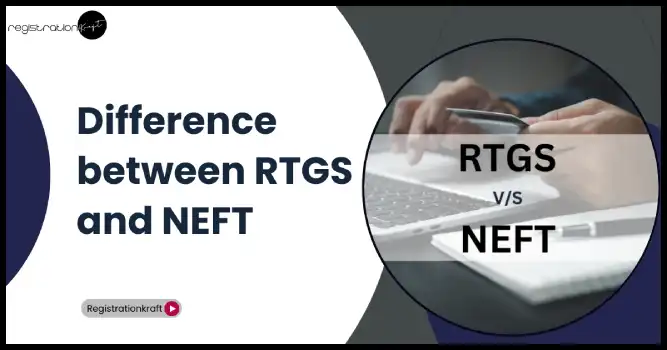What is the Difference between NEFT and RTGS

NEFT full form is National Electronic Funds Transfer. Whereas, RTGS full form is Real Time Gross Settlement. Both NEFT and RTGS are electronic payment systems that allow users to transfer their money from one bank account to another bank account. However, both of them differ from each other. Let’s check out all the key differences between NEFT and RTGS.
What is NEFT?
National Electronic Funds Transfer (NEFT) is a 24×7 available service for transfer of funds. Under this payment system, the transaction gets processed in batches of 30 minutes. There isn’t any minimum or maximum limit on transfer amount specified by RBI.
To initiate a NEFT transfer, you must provide a few details such as beneficiary name, account number, account type, bank name, and Indian Financial System Code (IFSC) of their bank.
What is RTGS?
Real-Time Gross Settlement (RTGS) is a funds transfer system wherein money is transferred from one bank account to another in real-time. By opting for RTGS, high transaction amounts can be transferred to another bank account instantly. The minimum amount which can be transferred at a time using this system is Rs. 2 lakhs.
The details required for RTGS transfer are the same as those for NEFT.
Key Differences between NEFT & RTGS
Let’s find out the difference between NEFT and RTGS with the help of the table below:
| NEFT (National Electronic Funds Transfer) | RTGS (Real-Time Gross Settlement) |
| In place of the Special Electronic Fund Transfer (SEFT) system, the National Electronic Funds Transfer system was implemented in November, 2005. | The Real-Time Gross Settlement system, a significant technology-based electronic payments transfer system throughout India, was put into place in March, 2004. |
| With the help of NEFT transfer, transactions of any amount can be sent to another bank account. There’s no maximum limit for funds that can be transferred in a day. | Using RTGS, large amounts of funds can be transferred instantly to another bank account. It is faster than NEFT. |
| There is no minimum transfer limit ceiling in case of NEFT. | The minimum transfer limit ceiling in case of RTGS is Rs. 2 Lakhs. |
| For smaller value transactions, the NEFT mode is used. | For high-value transactions, RTGS is used. |
| The NEFT-transferred funds are settled on a half-hourly basis. | The settlement of RTGS funds is instant and takes place in real-time. |
Conclusion
Both NEFT and RTGS are electronic payment systems. However, they differ in many ways. While NEFT can be used for smaller transactions, RTGS only allows transfers of Rs. 2 lakhs and above. RTGS transfers are instant. Whereas, NEFT transfers take up to half an hour.
Frequently Asked Questions (FAQs)
Q1. What is RTGS and NEFT amount transfer limit?
The transfer limit for RTGS is Rs. 2 lakhs and above. For NEFT, there’s no transfer limit.
Q2. Between RTGS and NEFT, which one is faster?
RTGS is definitely a faster payment system as it transfers funds from one bank account to another in real-time.
Categories: Banking
Tags:





